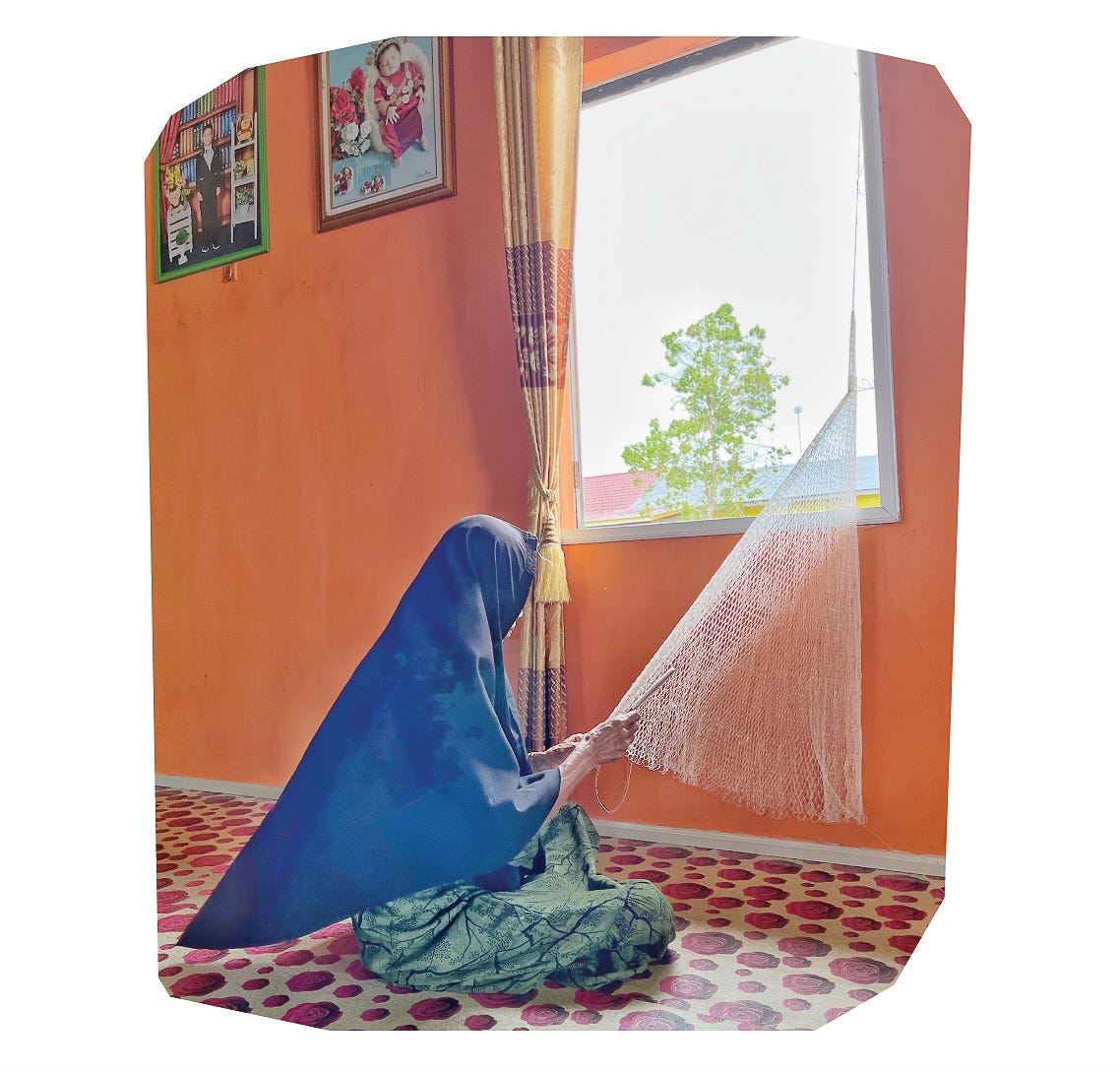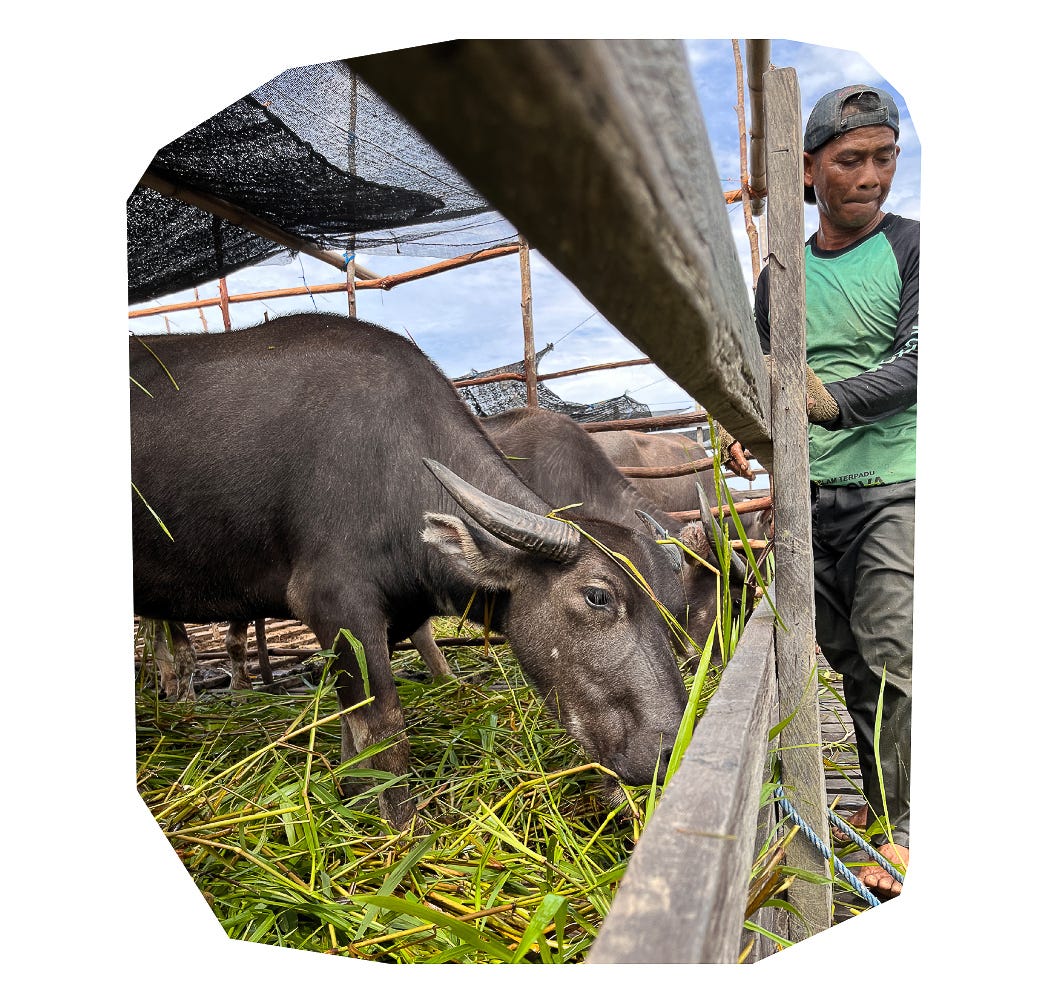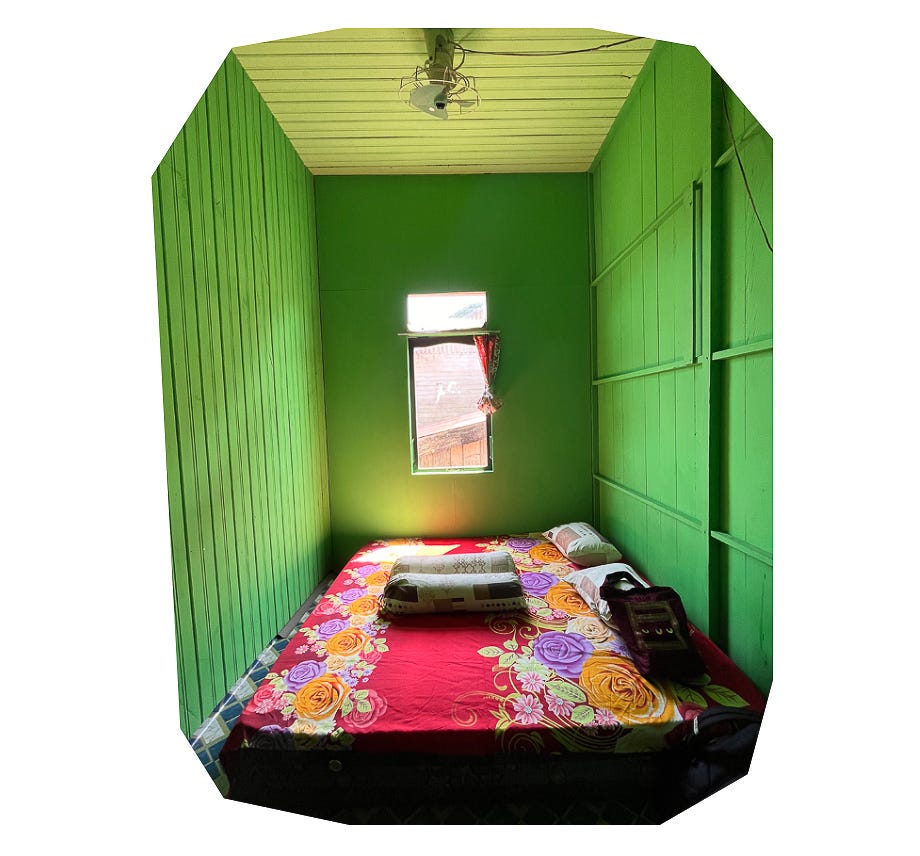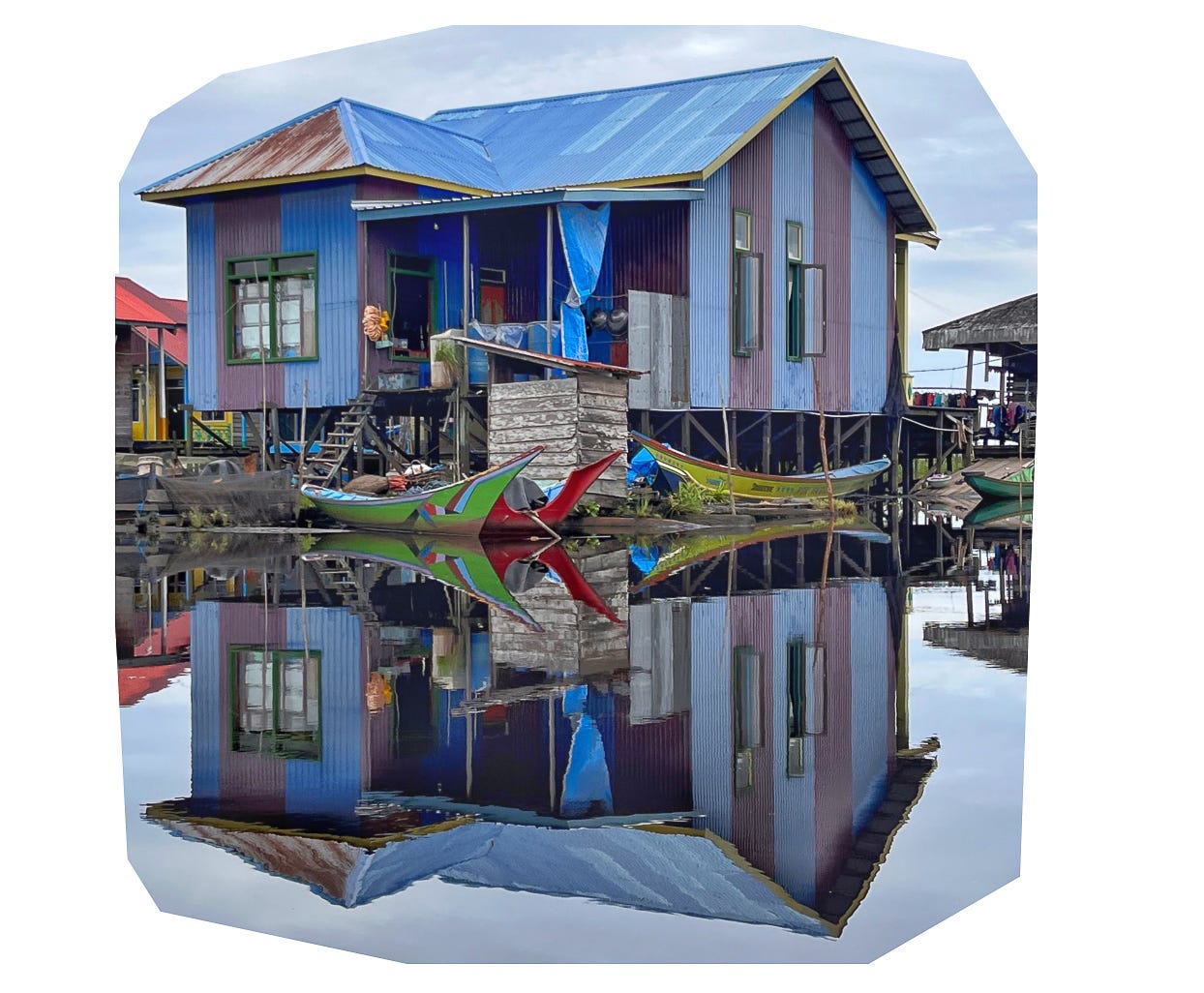If you’ve arrived here from somewhere on the web, welcome! NE Where is a an independent, travel-focussed journal for curious people. If you’d like to receive pieces like this one via email, please consider becoming a subscriber. It’s free – or, for less than $1 a week, upgrade to a paid subscription, where benefits include full access to NE Where’s archive, which is packed with stories about exceptional women, and other tales about interesting people and places.
Borneo – in 5 photos
Listen to this note, instead of reading it:
Dear NE-One
Back in May I sent you “Madagascar – one photo a day”. I was on a month-long trip through the island’s central highlands, and I’d selected one photograph taken each day that previous week. The photos weren’t hugely spectacular, but they were a window into regular life in that part of the world – and it seems many of you enjoyed that glimpse of ‘everyday Madagascar’. So I thought I’d launch something new here. In 5 photos will be exactly that: a collection of five photographs that I’ve taken on assignment somewhere. They won’t be the grand tourism-board type pics that you’d expect of the destination; instead, they’ll be images that were snapped at random moments that just seem to capture the spirit of that place, in that time.
Borneo: Up the mighty Mahakam River
Through December and January Mark spent two months travelling 5,000km across Kalimantan, the Indonesian part of Borneo. He was on assignment for Lonely Planet, researching the Kalimantan chapter of LP’s new-generation Borneo book, and I joined him as he explored life along the 980km-long Mahakam River. From Samarinda city we travelled a week upriver, and then chugged 24 hours back down by passenger boat. We didn’t make it all the way up – river travel is slow, and Mark had time (and editorial) constraints – but, what a spectacular trip it was!
1. An afternoon in Pela village
As with all villages along the Mahakam, life in Pela is all about the river. People live in stilted houses above the water, and most depend on it for their livelihood. I was captivated by the wonderfully bright colours that popped from inside peoples’ homes – the walls and floors especially are brilliant riot of pattern and colour. We were invited into the home of the woman (pictured above) who was making her husband a new fishing net. The house was typical of most in these parts: a calendar and at least one framed photograph on the wall, patterned plastic flooring and the only piece of furniture, a glass-fronted cabinet that holds family treasures.
2. The buffaloes of Melintang
Near Melintang we came across a stilted platform for buffaloes that was surrounded by the floodwater of the Mahakam. Every rainy season it is home to around 400 buffaloes, whose humans spend up to six hours each day sourcing and cutting the reeds that will sustain the animals. They are fed, watered and washed here for around four months while the water is high, then when it recedes the gates are opened and the buffalo roam free.
3. Our home for a night
We spent Christmas night in a fishing village called Muara Muntai. Pictured here is our room in the guesthouse we stayed in – almost all of our accommodation along the Mahakam was similar to this: colourful, with a mattress on the floor, and pillow and a blanket provided. Simple, clean, comfortable and around $12 a night.
4. Muara Ohong stilted village
I went into a photographic frenzy the morning we putted through Muara Ohong – the reflections were mesmerizing. This was one of the grander homes in the village, a little larger than most and with walls of iron, not wood. See the small wooden hut between the house and the boats? That’s the toilet – very typical of all houses along the river – which is simply a hole in the floorboards.
5. The wild waterways of Tepian Ulaq
Before we headed upriver I didn’t know what to expect of the Mahakam. I’d spent time in Sarawak* (one of Malaysia’s two states in Borneo) and had travelled up to jungle-engulfed longhouses on a river that was shrouded with trees; I guess I had that in mind, so I was surprised by just how big and how used the Mahakam is. In its lower stretches the river in some places is hundreds of metres wide, and is a highway for the enormous barges that carry coal into Samarinda. Borneo down here felt open and vast; big skies and a world of water. It also felt abused sometimes, particularly when we saw the barges. Around Tepian Ulaq the river narrowed a little, and it was here that we veered off to explore some of the slender channels that tunnelled through trees, spotting hornbills and proboscis monkeys as we went.
*
Interested in travelling through East Kalimantan? Take a look at the Kalimantan Tour Guide and Borneo Tour Guide sites – they’re a collective of locally-based tour guides and were recommended by our awesome guide Awang.
Perhaps next month I’ll share five photos from our 24-hour journey down the river, which was a completely different experience, and my absolute highlight of our time on the Mahakam. Paying subscribers, I’m dropping another four photos below the paywall; there’s also a video that captures what for me will always be the sound of the Mahakam, as well as contact details for our outstanding guide – so please scroll on.
Thank you for coming along on this ride!
Until next week,
Narina x
Borneo in 4 more photos – and a video
6. The soundtrack of the Mahakam
Keep reading with a 7-day free trial
Subscribe to Travel: NE Where to keep reading this post and get 7 days of free access to the full post archives.












